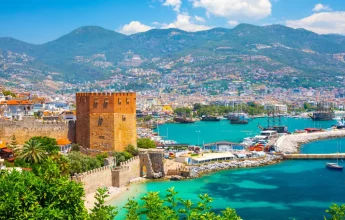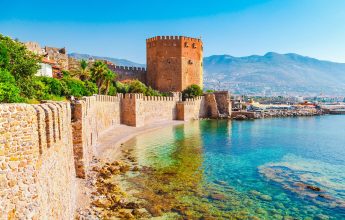Features of Alanya

Mountains and Streams
The north of Alanya is surrounded by coastal ranges consisting of hills and plateaus, the heights of which exceed 1000 meters, where the Geyik and Akçalı Mountains, which are part of the Taurus Mountains, meet. Here, there are places where the locals live as a highland during the summer. In the lower parts of the mountains, plains along the coast were formed. Alanya peninsula is separated from the Taurus Mountains by such a plain. Alanya has many streams of various sizes with irregular regimes. Flow rates of rivers vary according to seasons.
Due to the hot and dry summers, the flow rates of the rivers decrease towards the end of summer, and some of them even dry up. With the onset of rains in autumn, the water level rises gradually. In the spring, with the melting of the snow in the Taurus Mountains, it finds its final limits. Streams and streams, whose sources are the Taurus Mountains, while descending to the sea, due to the excessive slope of the land, while they flow fast, they cause flood destruction and strengthen the erosion event. The most important of these streams, which are used more or less for irrigation purposes, are Alara Stream, Kargı Stream, Serapsu Stream, Oba Stream and Dim Stream. Alara Stream; It draws the border between Manavgat and Alanya districts. The small regulator facility in Dim Stream is also used as a recreation area. The work on the Dim Dam, which is still in the project phase on the Dim Stream, continues.
Flora
The total surface area of Alanya is 175,678 hectares. Of this, 16.45%, 28.880 hectares, agriculture, 6.26%, 9.860 hectares, meadow and pasture, 65.48%, 115.013 hectares of heath and forest, 0.10%, 185 hectares, water surface, 11%, 20,560 hectares of which 70 are composed of non-agricultural and residential areas. With its climate and location, it is a region with the most fertile soils of the Mediterranean region. For this reason, the plant species grown vary. The most forest richness of the Mediterranean region is within the borders of Antalya province. Forests in Alanya constitute 0.5% of the country’s forests.
In order to increase this rate, an average of 750 hectares of land is afforested annually. There are larch and cedar forests in the high parts of the mountains, and red pine forests in the coastal parts. While citrus orchards and banana plantations in the coastal area bring a lively greenery to the region, tree species such as Avocado and Kiwi, which are good agricultural products for the region, are increasing. Cold-resistant fruit species such as Apple, Pear and Quince are grown in mountainous and plateau regions. Eucalyptus Trees, which were brought to rehabilitate swampy lands years ago, adorned the roadsides as an ornamental plant after completing their duties.
climate
A typical Mediterranean climate prevails in Alanya, with hot and dry summers and mild and rainy winters. In this region, where winters are mostly like summer; The effect of the summer heat is reduced by the breeze blowing from the sea towards the land in the afternoon. In addition to its natural beauties and historical values, it is of great importance to know the distribution of climatic features such as sunbathing times, sea water and air temperatures according to months in the region, which is a complete tourism paradise with its positive climate.




